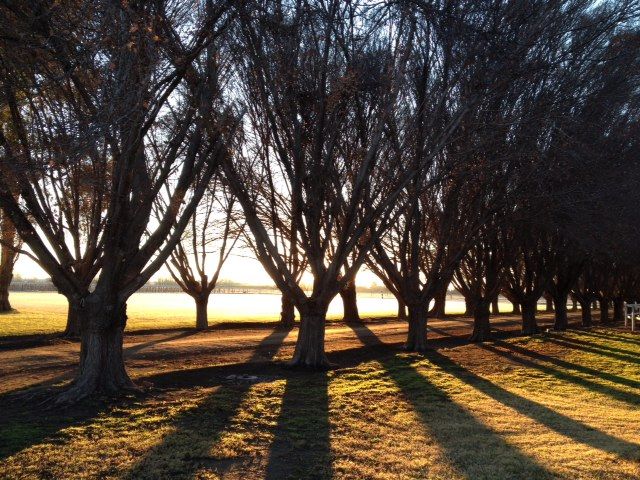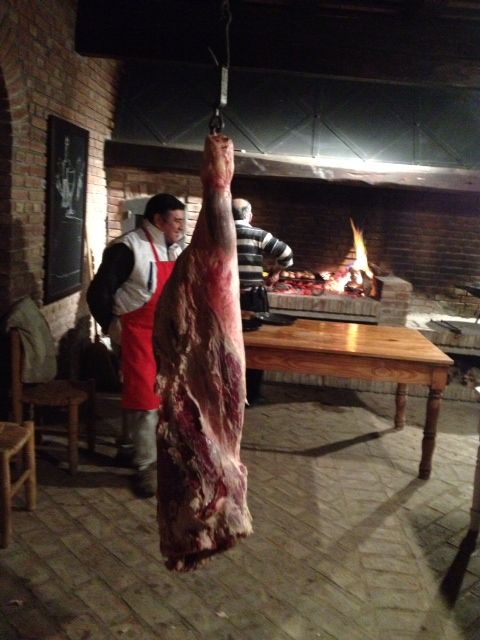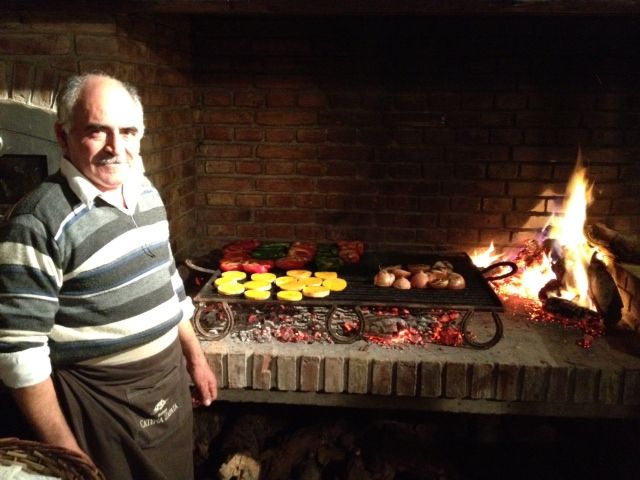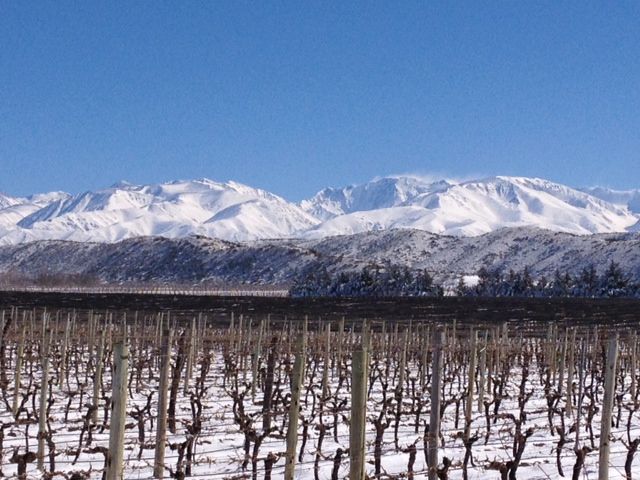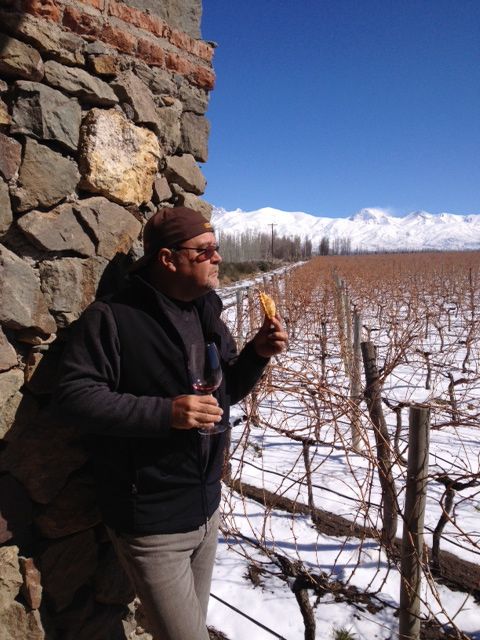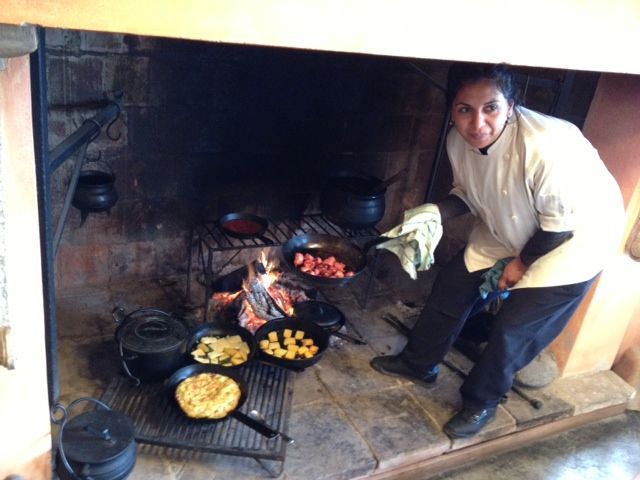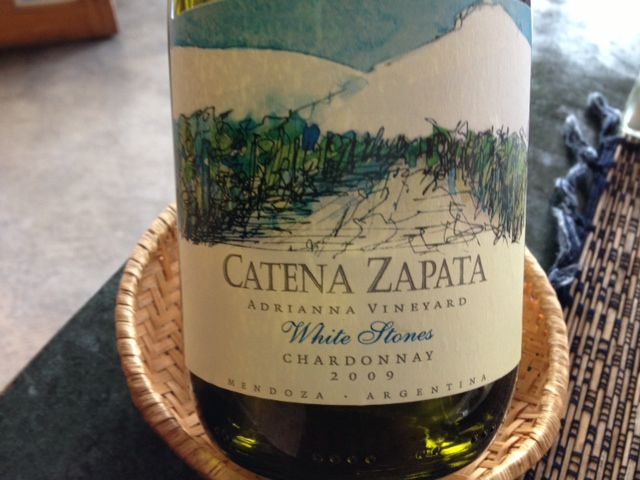Brazil native Eugenio Jardim is a Bay Area wine consultant and educator. Sunset Magazine named him Sommelier of the Year in 2010. He ran the wine program at Jardinière for 11 years and conducts very high-profile wine tasting groups in the U.S. and Brazil.
His approach to wine is fun but professional, educational and nonthreatening, creating an enjoyable experience rather than an intimidating one. Jardim’s philosophy is driven by his passion, and he has built a reputation for seeking out the new and exciting wines of the world.
Eugenio is currently visiting Argentina on an intensive educational trip nicknamed “Malbec Camp” and is sharing with us a few of his notes (and pictures) from the road! Last time we heard about his time in Buenos Aires, and this week brings his tales of time in Mendoza.
Malbec Camp: Days Two and Three!
Day Two:
Our second day brought one of the most unexpected events in these parts: rain. With an average of only eight inches of rain per year, the Mendoza region has a desert-like environment. Mendoza is located at 33 degrees south latitude on the western frontier of Argentina, and it is best described as a high-altitude desert oasis. All the moisture brought inland from the Pacific Ocean is obstructed by the massive Cordillera de los Andes, which at this latitude has some of the highest peaks on Earth.
So how in the world is it possible that Mendoza became such a fertile region and home to the world’s best Malbec grapes when it is basically just a glorified desert? It all happened thanks to an ancient and complex system of dams, channels, and ditches designed to harvest the melted snow, which formed the many rivers flowing down year-round from the Andes.
We were lodging at the gorgeous La Vendimia property, the Catena family country home, which reminded me of the beautiful 19th-century architecture style of Mexican haciendas, complete with horse-training areas and furry llamas grazing about. The property is located in the Rivadavia district, the place of some of the first Italian settlements in the region. These dry flatlands provided most of the juice to Argentine wines before high-altitude vineyards were planted.
As guests of the Catena family, we were treated to some wonderful and unforgettable traditional treats. A group of singers and dancers performed gaucho folk songs and dances. Jose, a local butcher, dissected, before our own eyes and in just a few minutes, a leg of a cow weighing more than 150 pounds with the precision of a plastic surgeon. We even got to taste the meat raw, which melted in our mouths, reminding us of the texture of maguro nigiri at a sushi restaurant. Chef Martín then proceeded to grill our choices of cuts alongside a selection of vegetables for a lavish Argentine-style dinner.
Their cooking techniques are so clean and simple; all the flavors of these local ingredients are highlighted in way that would make Alice Waters of Chez Panisse very happy. The meats were covered with a layer of coarse sea salt and nothing else. The vegetables, grilled alongside with the meats, were brushed with the local peppery olive oil and lightly sprinkled with salt. I noticed something really curious on the grill: the chef had sliced red and green bell peppers and cracked an egg in their hollowed halves. The eggs cooked slowly as the peppers were softening from the heat of the charcoals below. With just a dash of sea salt this proved to be a fabulous side dish that I will try to replicate at home.
It wouldn’t have been a normal day here if it didn’t involve tasting a lot of wines; we went through a fair amount of Catena chardonnays and malbecs. Another perfect day south of the equator!
Day Three:
In the foothills of the Andes, rain in the flatlands means snow in the mountains—a lot of snow! We had something very special planned for today, which was a visit to Adrianna Vineyard, Catena’s highest-elevation vineyard, planted at 4,856 feet in the hills of Tupungato.
Getting there was quite a trek from our beautiful La Vendimia, two hours’ drive to be exact. We were slowed even more because of one of the thickest fog banks I have ever seen. Remember, I live in San Francisco, which means I know fog, but this was an absolute wall of smoke that separated us from the Andes. Once we got through the fog it was as if the heavens had magically opened up and we were looking at some of the bluest skies I’ve ever seen, juxtaposed against the majestic peaks of the Andes. We could barely contain ourselves and sounded like whiny children wanting to get out of the car. When we finally did, we were humbled by the beauty that surrounded us. Beneath our feet, enough powdery snow to make a ski bum cry. All around us was the cleanest air we have ever breathed, and in front of us, the white and gigantic Andes!
Adrianna Vineyard was planted in 1992 as an attempt to see how well vines would fare in such extreme conditions. Everyone tried to persuade Laura and her father Nicolas not to do it, but thank God they didn’t listen! I can safely say it is one of the most beautiful vineyard sites in the world! There we received a lesson on viticulture by Frederico Gusso, Adrianna’s vineyard manager. The lesson included pruning and digging holes in the frozen ground to see all the different components of the soils. We were quite surprised to find rocks that looked just like river pebbles. We then learned that once, millions of years ago, after the mountains pushed themselves out of the ocean, huge rivers ran through the region before they all dried up.
We were then taken to a rock tower, aptly named El Mirador, where we were served the best empanadas we’ve ever had, paired with the delicious wines made from the fruit of Adrianna’s Vineyard. We were served two types of empanadas: a vegetarian one filled with spinach, onions, and garlic; and a meat one filled with deliciously spiced ground beef mixed with green onions and hard-boiled eggs. The Argentines, like the Spaniards or the Italians, love to feed you, so we were never warned that lunch was still coming. We overindulged on those amazing homemade delicacies, and when we got to lunch at La Tupina we regretted it a tad because a beautiful lunch awaited us.
La Tupina is a tiny restaurant owned by chef Lucas Bustos, who did stints at Daniel and Le Bernadin in New York City. His restaurant has just reopened since it was destroyed by the ferocious Andean winds known as La Zonda.
There we were served a multiple-course lunch that culminated with another Argentine specialty, pastel de camote, a baked mixture of white sweet potato and ground beef topped with coarse sugar. It reminded me of a homemade shepherd’s pie of sorts, just better! I never imagined that beef and sugar could coexist in a dish. It paired really well with Catena’s new and stylish chardonnay from Adrianna’s Vineyard, “White Bones,” a high-end new product sure to please the most discerning palates.
To finish we enjoyed a hearty clay bowl full of lentils and chorizo paired with the Catena Alta Malbec, harvested from selected plots of Catena’s top vineyards from throughout Mendoza.
Every day here in the Argentine winelands has been a fabulous journey of discovery. I am truly enjoying their delicious wines, decadent food, and hospitable people!
Stand by for Eugenio’s final Malbec Camp installment in an upcoming issue!
Eugenio Jardim; photo courtesy of Jardinière.
